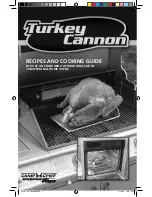
Page 17 of 28
running lights (9), and tail lights (10L, 11R)
at least
every 100 miles.
10. Carry emergency flares and fire extinguisher, if required for operation in your state. Carry extra
bulbs and fuses if towing the trailer at night over long distances.
Glossary
Accessory Weight
- the combined weight of automatic transmission, power steering, power brakes,
power windows, power seats, radio, and heater, to the extent that these items are available as
factory-installed equipment.
•
Carcass
- the tire structure, except for the tread,
which provides the major portion of the tire’s
capability to deflect in response to the vertical loads and tractive forces that the tire transmits from the
roadway to the non-pneumatic rim, the wheel center member, or the vehicle and which attaches to the
vehicle or attaches, either integrally or separable, to the wheel center member or non-pneumatic rim.
•
Carcass Separation
- the pulling away of the carcass from the non-pneumatic rim or wheel center
member.
•
Chunking
- the breaking away of pieces of the carcass or tread.
•
Cracking
- any parting within the carcass, tread, or any components that connect the tire to the wheel
center member.
•
Curb Weight
- the weight of a motor vehicle with standard equipment including the maximum capacity
of fuel, oil, and coolant, and, if so equipped, air conditioning and additional weight optional engine.
•
Load Rating
- the maximum load a tire is rated to carry.
•
Maximum Loaded Vehicle Weight
- the sum of:
Curb weight
Accessory weight
Vehicle capacity weight
Production options weight
Maximum Tire Width
- the greater of either the linear distance between the exterior edges of the
carcass or the linear distance between the exterior edges of the tread, with both being measured
parallel to the rolling axis of the tire.
•
Normal Occupant Weight
- 68 kilograms times the number of occupants.
•
Occupant Distribution
- distribution of occupants in a vehicle.
•
Production Options Weight
- the combined weight of those installed regular production options
weighing over 2.3 kilograms in excess of those standard items which they replace, not previously
considered in curb weight or accessory weight, including heavy duty brakes, ride levelers, roof rack,
heavy duty battery, and special trim.
•
Tread
- that portion of the tire that comes in contact with the road.
•
Tread Separation
- pulling away of the tread from the carcass.
•
Vehicle
C
apacity Weight
-
the rated cargo and luggage load plus 68 kilograms times the vehicle’s
designated seating capacity.
•
Vehicle Maximum Load on the Tire
- that load on an individual tire that is determined by distributing
to each axle its share of the maximum loaded vehicle weight and dividing by two.
•
Vehicle Normal Load on the Tire
- that load on an individual tire that is determined by distributing to
each axle its share of the curb weight, accessory weight, and normal occupant weight and dividing by
2.
Содержание 57762
Страница 8: ...Page 8 of 28 ...
Страница 24: ...Page 24 of 28 Parts Diagram ...












































